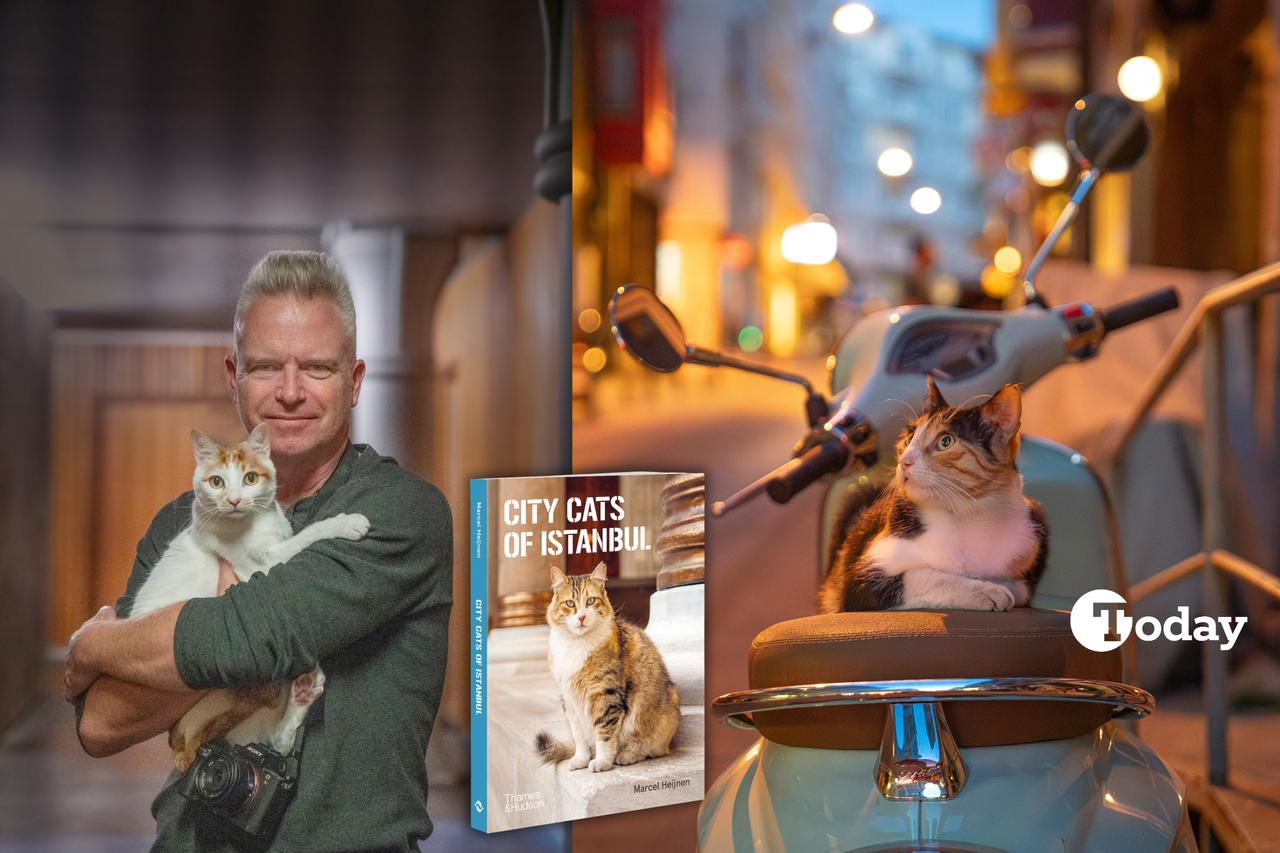
Dutch photographer Marcel Heijnen, a man deeply in love with cats, has captured their soulful presence around the world. Having previously photographed cats in Hong Kong and China and turned those images into books, Heijnen has now set his sights on Istanbul. Roaming the city at different times, he sought to capture not only its cats but also the stories behind them. The result is a new photo book, "City Cats of Istanbul," and a dedicated exhibition at the Cat Museum Istanbul. On this occasion, we spoke with him about his creative journey.
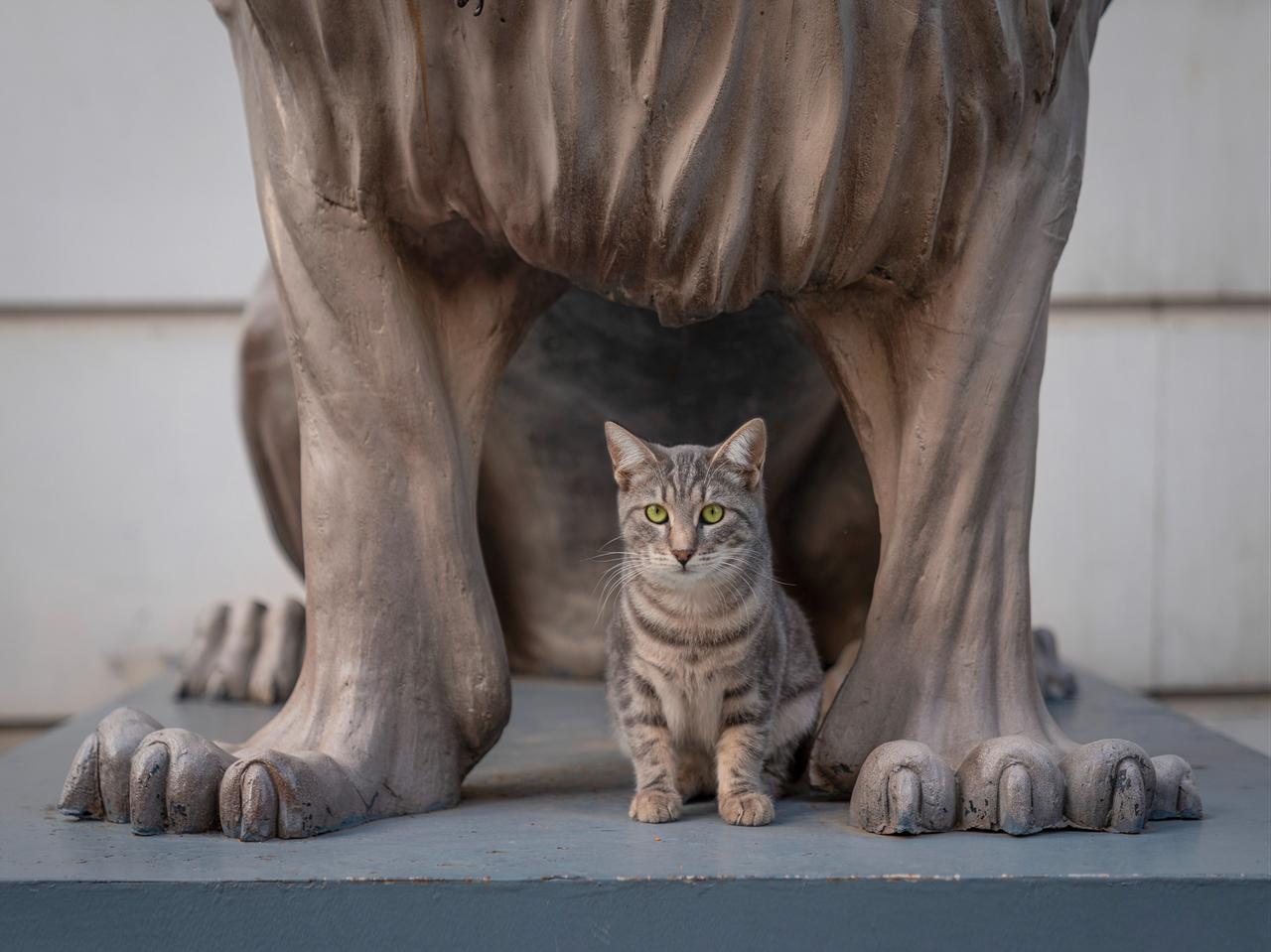
I’ve always loved cats—and photography, of course. Over the years, I’ve worked on various photographic series and even published a (very different) photo book before moving back to Hong Kong in 2015. Soon after, I noticed a cat perched on a shop counter—one after another. That’s when I realized I had found the perfect “excuse” to tell a deeper story about the city. My photos are about cats, yes, but even more about the urban environments they inhabit. Through them, I aim to capture the very DNA of a city.
The book "Shop Cats of Hong Kong" was published in 2016 and became an instant success. I followed it up with "Shop Cats of China"—featuring cats in at least 10 different mainland Chinese cities.
Of course, I was aware that Istanbul is the actual cat capital of the world, and after I moved back to Europe following 31 years in Asia, it was time to visit and create the photo book "City Cats of Istanbul."
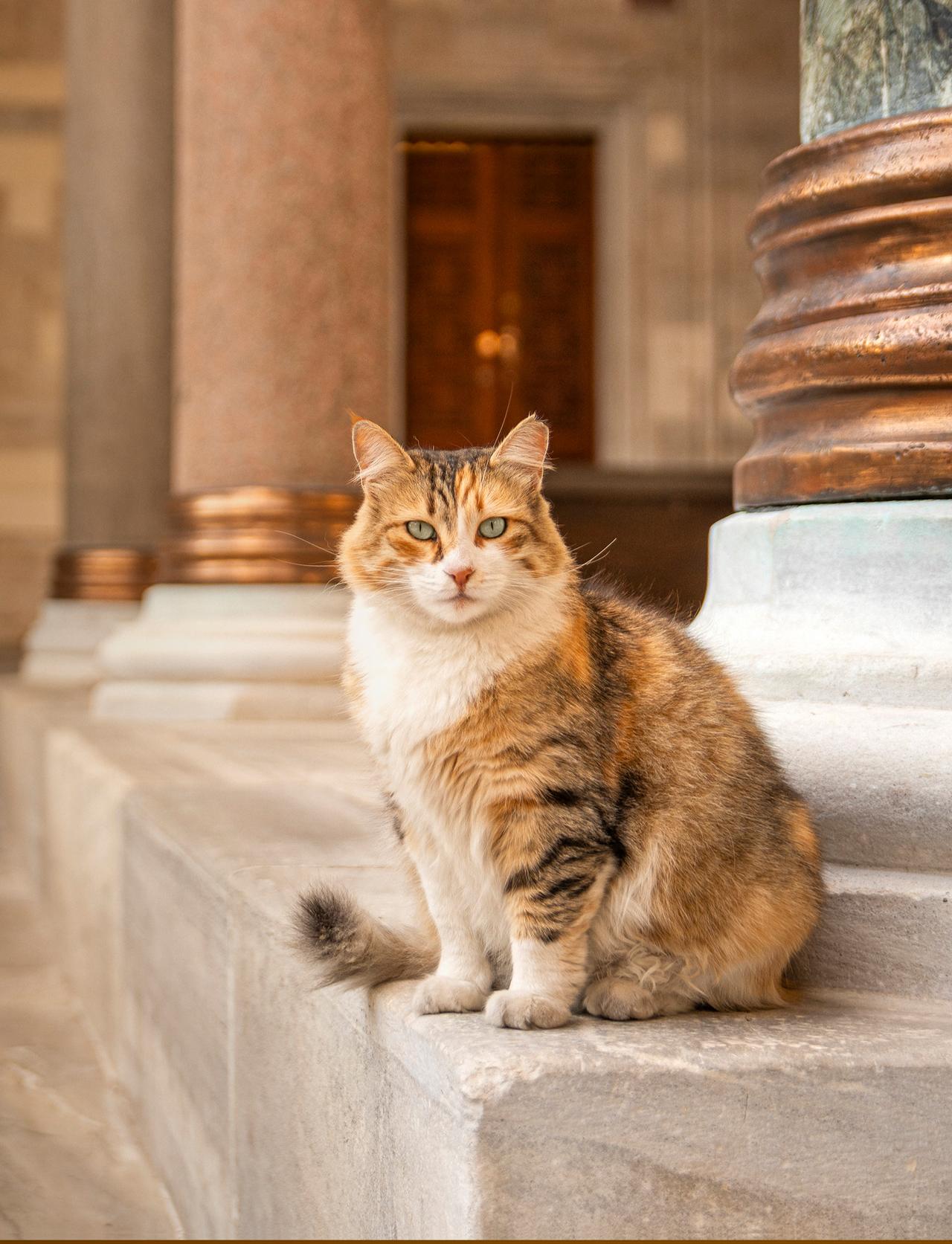
Interesting statements! I hadn’t thought of cats in those terms, but I guess they are correct. To me, cats represent many things. First and foremost, they have personalities—each and every cat is different. Some are shy, some are sweet, some are playful. Unpredictable, zen, arrogant, aloof, etc.
I like the fact that, generally, with cats, you have to earn their love and respect. It’s not an automatic thing. Cats are entertaining too—that’s why they are so popular on the internet.
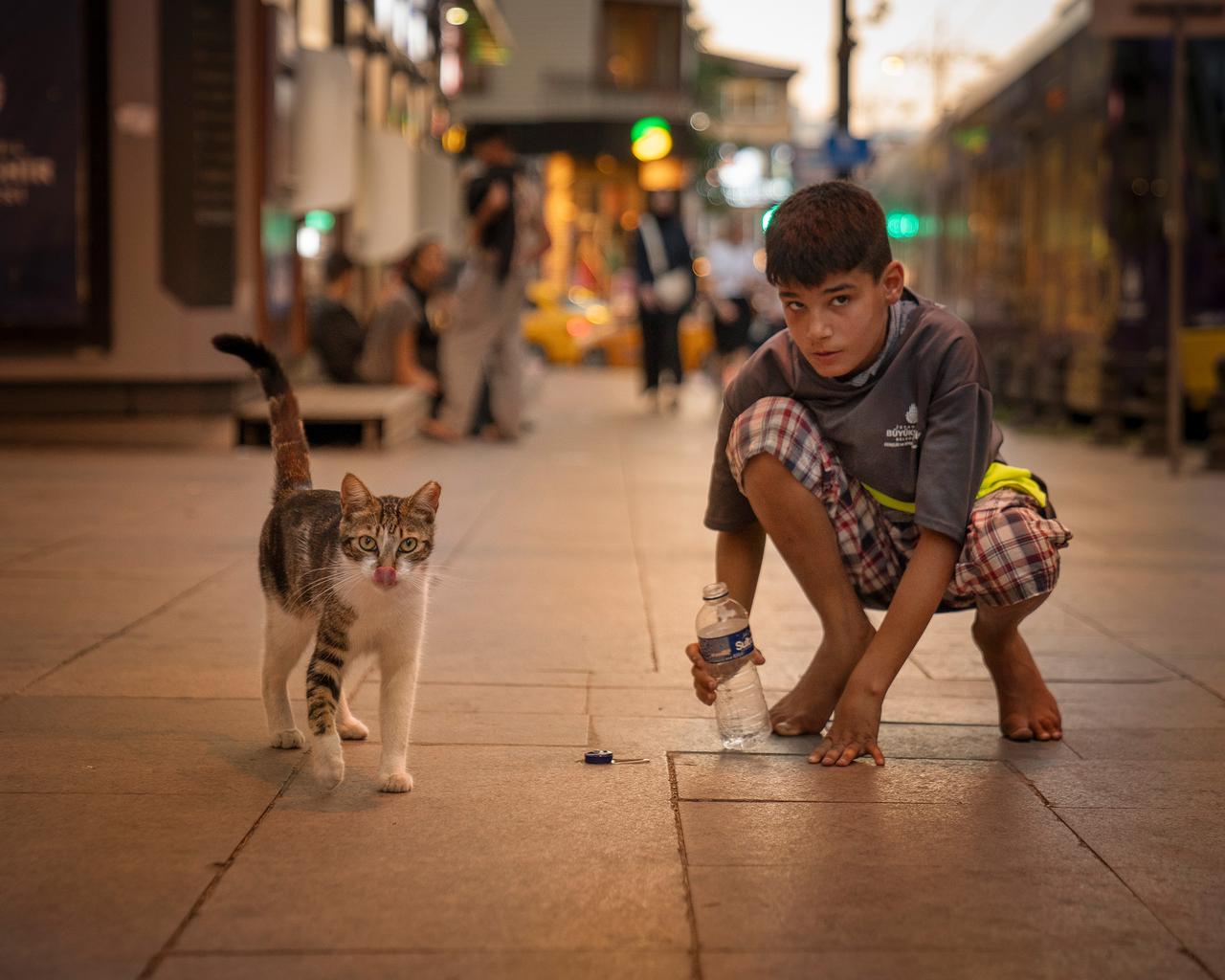
In China, cats in public are mainly found in shops—this is why I created the books "Shop Cats of Hong Kong" and "Shop Cats of China." These cats are specifically "employed" by the shop owners (some would argue it’s the other way around!) to repel and catch mice and rats. These shop cats live in very specific types of shops (often dry food and medicine stores) and only in the older parts of cities.
But in Istanbul, cats are really everywhere—on the streets, in cafes, and even in dental clinics. Cats are just omnipresent. I knew this would likely be the case (I watched "Kedi," of course, and follow a few Istanbul Instagram accounts), but it was still really amazing to see how much cats are integrated into daily life in the city.
I found that cats in Istanbul are being taken care of by the community but are not really "owned" by anyone in particular. Yet, Istanbulites show them love as if they were their own pets. I tried capturing that connection, shooting small moments of care and intimacy—like the fishmonger or the doner chef sharing a bit of food with a cat, the guys from the bakery hanging out with a cat during their tea break, or even the lady at the railway station petting a stray.
I do think so—probably especially those who have travelled to other cities and realised there aren’t many cats there.
Yes, I think it’s a general personality trait of cats to think they are rulers. The old joke about the difference between how dogs see their owners and how cats see them:
Dog thinks, “They house me, they feed me, they must be God.”
Cat thinks, “They house me, they feed me, I must be God.”
Or as they say: Dogs have masters, cats have servants.
This is true for cats around the world. But yes—Istanbul has so many cats that it really feels like they rule the place!
Yes, this is indeed quite significant, and I’m convinced this is what led to the reverence for cats that we still witness today—especially the stories about "Mancacis."
From the press release: Mancacis were tasked with making sure the city’s cats were fed. The city’s residents also had the option of buying food from Mancacis and feeding the cats themselves, or donating money to charitable foundations.
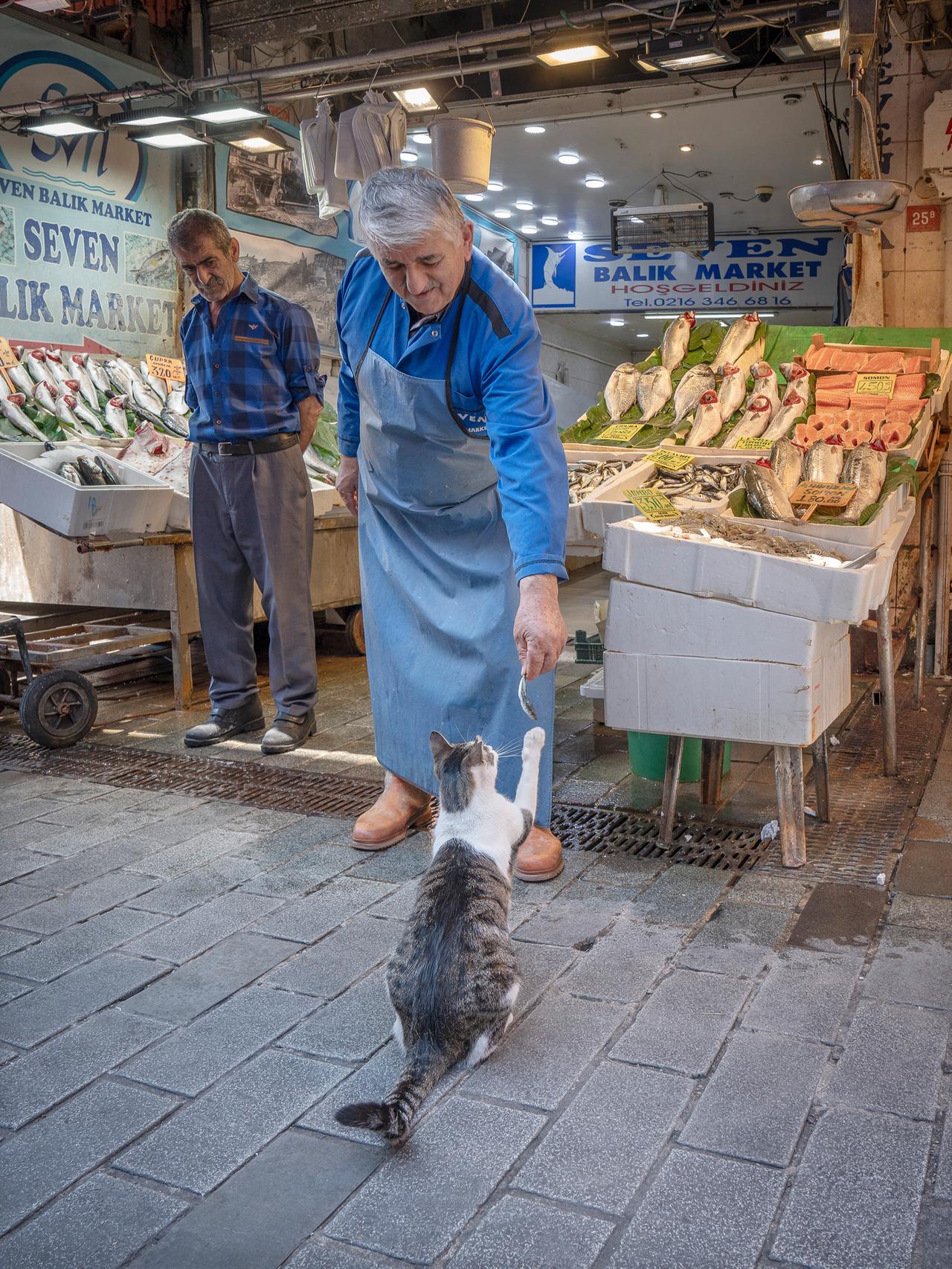
I spent two weeks in the city during spring 2024 and two weeks during autumn. Those first two weeks, I roamed the city fairly randomly. I stayed in Balat for one week and in Kadikoy for the second, but I just walked and walked and took hundreds, if not thousands, of photos. Sometimes people gave me tips on where to go.
When I returned in autumn, I was already aware of the gaps that my photo collection for the book still had. I focused on finding a few cats I could build stories around—like Lola, the cat in the leather shop, for example —and a good cover character, Madam Caki at Beyazit Camii.
Sometimes unexpected magic happens. My best cat photo ever happened in Hong Kong. I noticed a brown cat sleeping on a stack of black cable ties. I decided to wait around to see whether the cat would wake up so I could photograph it (sleeping cats are boring to photograph), when suddenly a black cat came out of nowhere and posed for me.
Joy, love, learning.
I’m not sure yet. I’m still fairly active in China and hope to expand my work there, but I’m also open to finding other cities to discover cats in. And beyond that, we have three amazing cats at home—and they are part of life’s adventure too.